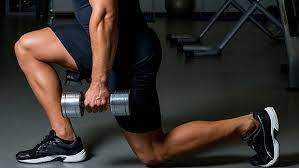In the world of fitness, stretching is constantly debated, everyone having already made their own opinion.
No stretching session before lifting weights or before warming up, focus on dynamic movements… Everyone takes their advice.
Whatever your own opinion on the matter, there is bound to be a sports coach or a fitness blog that will support your convictions. And root your habits!
But are your sources really trustworthy? Are your stretching sessions really beneficial?
To put an end to this age-old debate once and for all, we turned to Fatima Witick . This fitness teacher also gives classical dance, yoga and Pilates classes. During her 34-year career, she has supported thousands of athletes and enthusiasts.
According to her, knowing how to stretch properly is one of the eternal questions that divides the world of fitness and health. And if you do “like everyone else”, you are almost sure to be wrong.
“I don’t think I’ve ever met anyone who really knows what stretching is, and who understands this discipline. For most people, it’s about improving their flexibility,” says Witick.
“But it’s not necessarily healthy to be too flexible. To stretch well is to work on your posture, the symmetry of your body, the amplitude of your movements. It is to tend to obtain a more operational body. Flexibility for flexibility’s sake is not healthy. »
WHEN TO DO YOUR STRETCHING SESSION?
So, is it better to stretch before or after training? Witick reminds that the stretching session should not be used as a warm-up. Rather, it is a method to help you recover after exercise.
“Stretching is not a substitute for warming up, and this is especially true for static stretching. Movement should be at the heart of the warm-up, to prepare the body for action,” says Witic
“The best time to stretch properly is after training, when the body is still warm. But the stretches should be kept short, between 10 and 20 seconds. How to stretch? By favoring movements, especially with dynamic stretching. Again, I don’t recommend static stretching. »
But beware, there are some exceptions to this rule. If your workout has been particularly tough, Witick recommends a gentle cool-down session instead of the stretching session. Wait two or three days until your muscles have fully recovered before stretching.
“The same goes if you just ran a marathon. If your legs are very sore, give them some time. Stretch when you have regained normal sensations, ”she adds. “If you want to prepare your body before a sports session that requires strength and speed, avoid stretching too deep. In this case, it is the warm-up that you need to focus on. »
WHAT PARTS OF THE BODY SHOULD YOU STRETCH?
Now that we know when to stretch, let’s look at another question: which muscles to stretch? Of course, everyone will have different needs, but Witick would like to remind you of some basic stretching tips:
STRETCH THE HIPS
- The hip stretch starts from the glutes. Hips that are too stiff are the cause of most spine and knee injuries. Remember to stretch them!
- Learn how to bend your hips correctly, it is essential to correctly solicit the flexor muscles of the hips and strengthen them.
HOW TO STRETCH?
In general, it is by working on power, strength, posture, as well as the symmetry and amplitude of our movements that we maintain our body in good health. It is important to keep these concepts in mind when stretching and to make thoughtful movements. But Witick points out that it’s also very easy to make mistakes, adopt the wrong posture or stretch in the wrong place.
“For example, if your pelvis and hips aren’t open enough, you won’t benefit at all from hamstring stretches. That’s what I say all the time: if you feel the need to stretch your hamstrings, stretch your quads instead! It really works. No one ever believes me, but you should try. By stretching your quadriceps properly, you will see a real difference,” says Witick.
“You shouldn’t try too hard to stretch your neck either, a common mistake. It needs to be reinforced more than stretched, in order to compensate for the bad postures that we very often adopt on a daily basis. You have to pay attention to how you stand, learn to extend your hips, lengthen your spine in order to properly support your head.
STRETCHING WELL IS UNIQUE TO EVERYONE, BUT THERE IS A TIP THAT APPLIES TO EVERYONE
Witick emphasizes that there is no one-size-fits-all solution: stretching well is unique to everyone. It all depends on your morphology, although less flexible people will indeed require more attention. And if you’ve already found the stretches that are right for you (and a good teacher), we have one last secret to share with you: it’s all in the hips!
“If you’re in pain anywhere and in any type of pain, focus on your hips,” says Witick. “Extending this part of the body well will improve your overall alignment and make you stand straighter. It is the cure for many ailments. »
Have we managed to convince you of the benefits of a good stretching session? If so, head over to Fatima’s Instagram for all her tips and tricks.
Did you enjoy this article? Share it with your loved ones!
Link: HIIT OR LOW INTENSITY CARDIO? TRY BOTH!
Link: What is AI data cleaning? Explanation of overview, importance, and cleaning method



